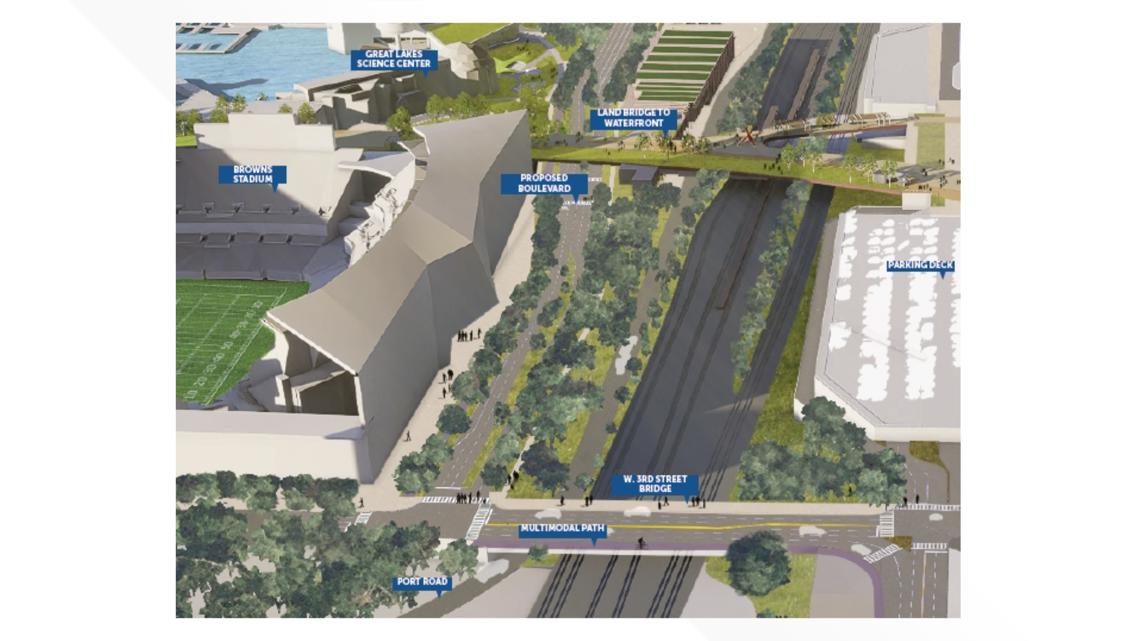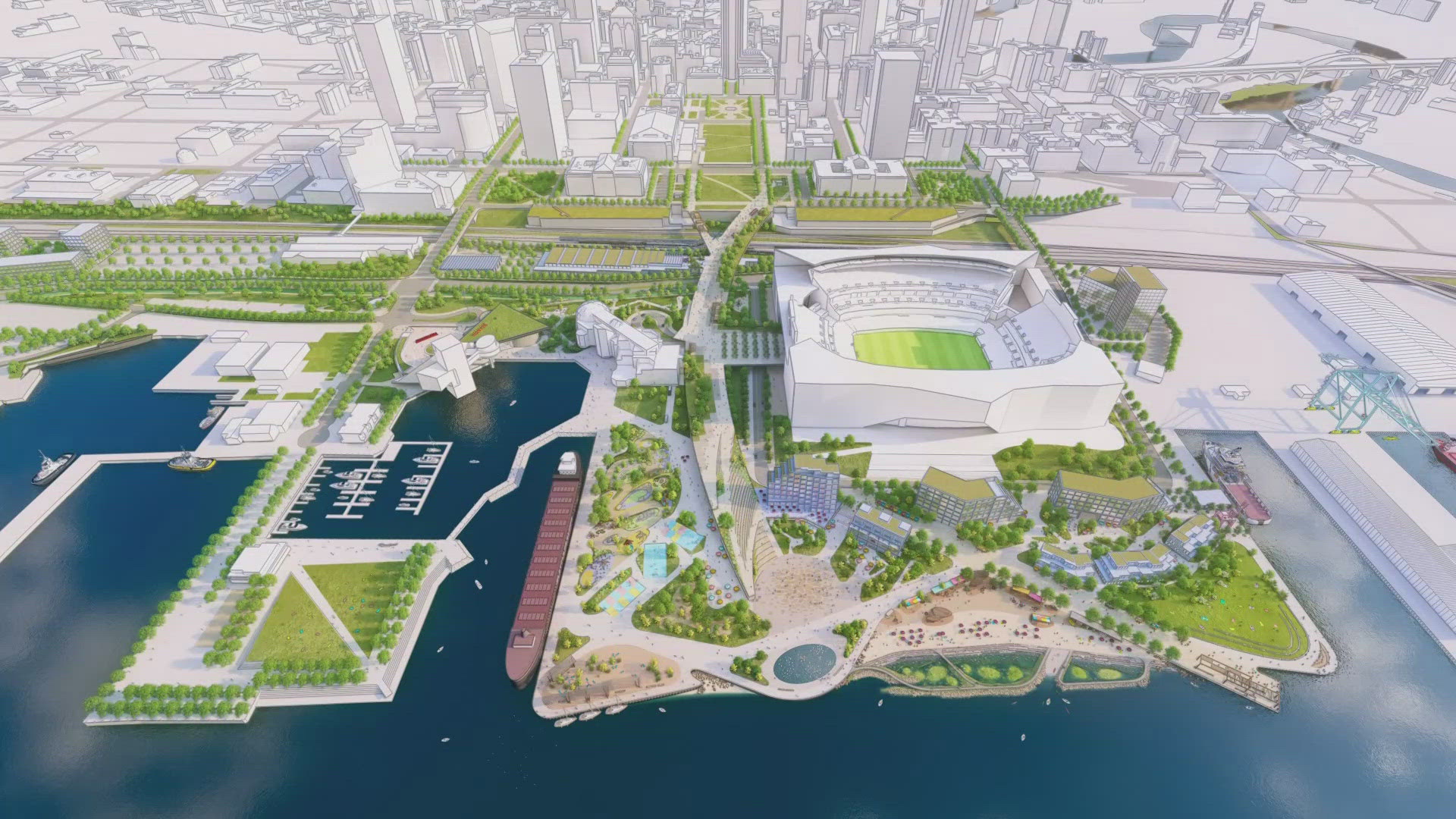CLEVELAND — The city of Cleveland will receive nearly $60 million in federal grant money for the proposed North Coast Connector project, a key component of the North Coast Master Plan and Mayor Justin Bibb's Shore-to-Core-to-Shore vision.
The funds will come from the U.S. Department of Transportation's Infrastructure for Rebuilding America (INFRA) grant program. The city says the funding from the INFRA program will be used to "support the transformation of key sections of State Route 2 into a pedestrian-friendly boulevard."
“We are thrilled to receive this significant investment from the INFRA program for the North Coast Connector project," said Bibb in a statement. “This grant will allow us to reimagine our waterfront access, transform outdated infrastructure, and build a safer, more vibrant connection between our residents, the lakefront, and the Port of Cleveland. This is a crucial step forward in making Cleveland a more connected and accessible city."
According to the city, the first phase of the project includes demolition of the Main Avenue bridge span between W. 9th Street and Erieside Avenue, the construction of a widened pedestrian and bike-friendly W. 3rd Bridge with a new intersection, and pre-construction and construction of the new Shoreway Boulevard segment from W. 3rd Street to the E. 9th Street ramps.
The project is estimated to break ground in 2027. You can see renderings of what is being planned for the initial phase below.

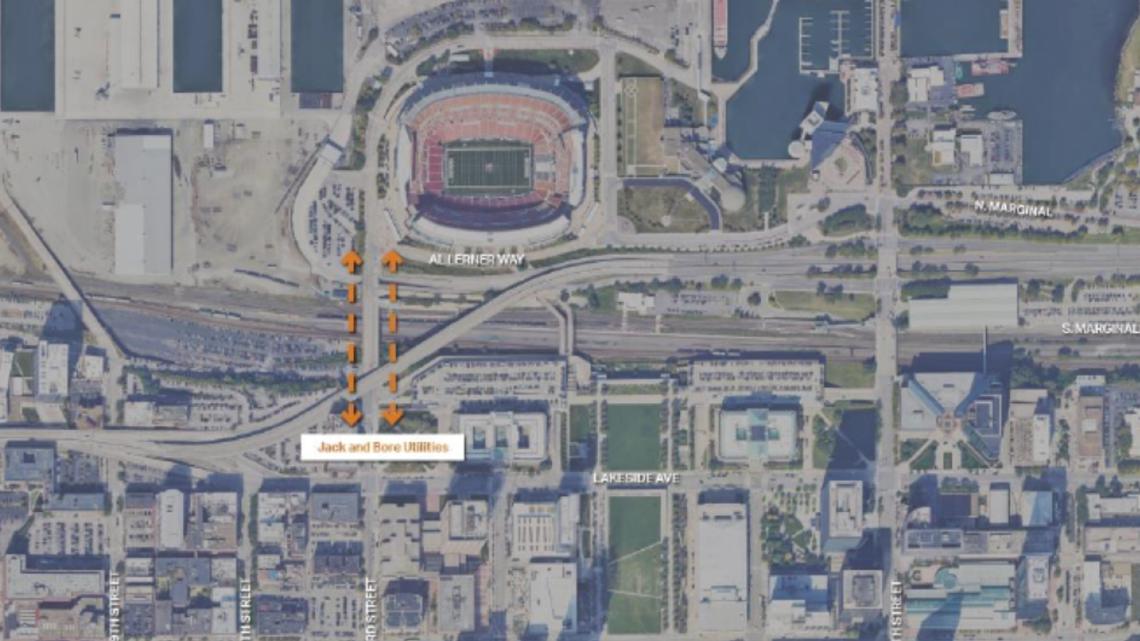

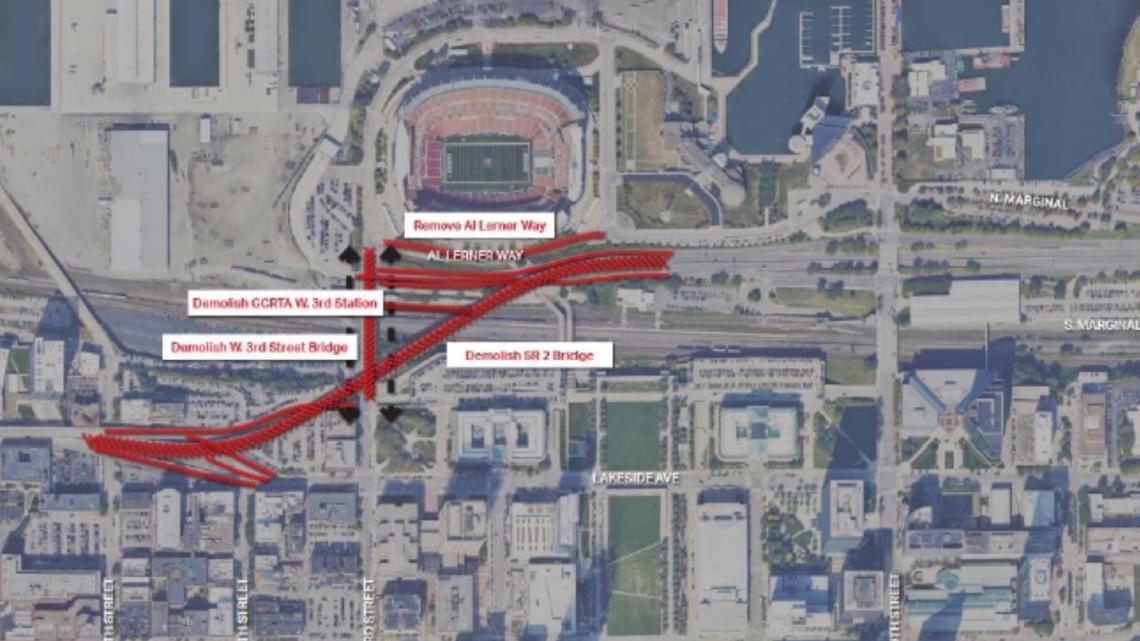

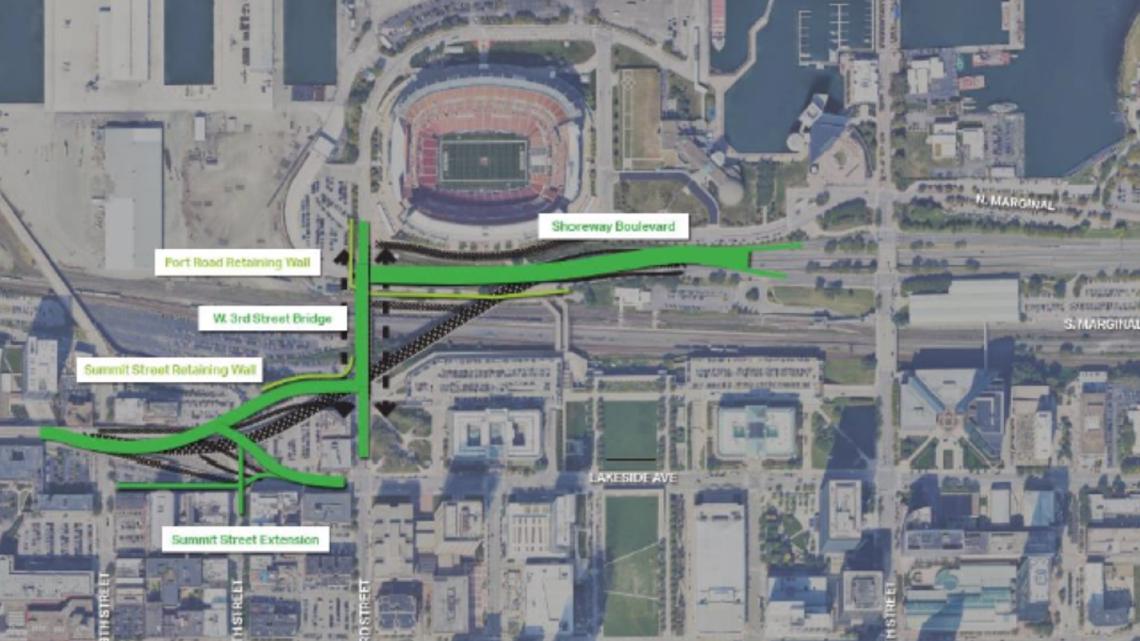
Bibb specifically thanked U.S. Sen. Sherrod Brown (D-OH) and Rep. Shontel Brown (D-OH-11) for their support for the city's grant application.
“This investment unlocks an exciting new future for Cleveland’s lakefront and downtown. The Cleveland community and our visitors will have new access to Lake Erie, our greatest natural resource, and a better transportation network that will drive growth,” said Sen. Brown in a statement. “I want to thank Mayor Bibb, County Executive Ronayne, and Cleveland’s business community who all worked with us to support this project that will be transformational for all of us who call Cleveland home.”
“Significant federal funding is headed to Cleveland thanks to the Bipartisan Infrastructure Law. Infrastructure is about making connections, but for too long some critical connections have been missing in Northeast Ohio. The North Coast Connector changes that - connecting downtown to the lake. This investment could spark important growth downtown that will make Cleveland an even better place to live, work, and visit. I was proud to vote for the Bipartisan Infrastructure Law to make the funding possible and to lead a letter of support for this project. Congratulations to Mayor Bibb and the City of Cleveland on receiving this federal funding. I will continue to fight for more resources for Cleveland and the entire region,” added Rep. Brown.
Also reacting to the INFRA grant was Cuyahoga County Executive Chris Ronayne.
"Cuyahoga County is grateful to Senator Sherrod Brown, Congresswomen Shontel Brown and the Biden/Harris administration for their commitment to the transformation of Downtown Cleveland’s lakefront with a $60 million allocation from the Bipartisan Infrastructure bill," Ronayne said in a statement. "We now have real momentum to implement a truly inspired vision. The North Coast Connector project will improve and expand upon multi-modal transportation options, promote equity and inclusion by removing barriers to our waterfronts for our residents, and further establish Cleveland as a world class destination."
BACKGROUND
The idea of a land bridge to connect downtown Cleveland to Lake Erie started to pick up steam in 2021, when the Haslam Sports Group, which owns the Browns, first unveiled designs for a park-like land bridge over State Route 2 and the railroad tracks. The proposal called for a combination of private and public money to help pay for its funding, which was estimated at the time to cost $230 million.
The city of Cleveland was given $2.5 million by the Ohio Department of Transportation to study the feasibility of the land bridge, while matching that with its own $2.5 million investment.
Planners provided a first look at the future of the lakefront, including the land bridge, in July 2023 during a North Coast Master Plan exploratory meeting at the Great Lakes Science Center.
But the real vision started to emerge during a "60% presentation" of the plan in October 2023.
According to Lisa Switkin, senior principal at New York-based James Corner Field Operations, pedestrians can have a "dynamic experience" on the land bridge. On their walk from the Mall to Lake Erie, they may be able to utilize a "multi-model transportation hub" to Amtrak and the RTA, take the connector to the Rock & Roll Hall of Fame and Great Lakes Science Center, head left to Huntington Bank Field for a football game or concert event, then finish out with a gentle slope down to the lake.
Straight down from the bridge is what Switkin referred to as a "central community plaza," including an amphitheater similar to the Solstice Steps at Lakewood Park. It leads to a waterplay area that includes a beach, kayak launch, wetlands, and series of porches.
To the east, planners envision a family-friendly area that features a large nature playground, sport courts, and cookout area. On the west side, there would be space for residential and commercial development, along with a garden walk area and fishing pier.
Earlier this year, the Ohio General Assembly passed a $4.2 billion capital budget, allocating $20 million for the North Coast Connector.
At the Lakefront Future Forum in August, planners revealed the vision of an area with a completely different version of the Shoreway. Specifically, renderings showed the lakefront area with the Shoreway reduced from an 50 mph highway to a 35 mph boulevard.
"We looked at the Shoreway and we looked at access to the lakefront. If you are standing here (Mall C) and want to walk to the lake, it's 20 minutes. That's pretty far," said Keshia Johnson Chambers, assistant director of the mayor’s office of capital projects for the city of Cleveland.
The solution, Chambers explained, is to "reassign the Shoreway" into a boulevard with two lanes in each direction and a median. "It gives us an opportunity to slow traffic down," she explained, noting that the area will feature pedestrian walkways and multi-purpose lanes. "You won't feel threatened by vehicles."

